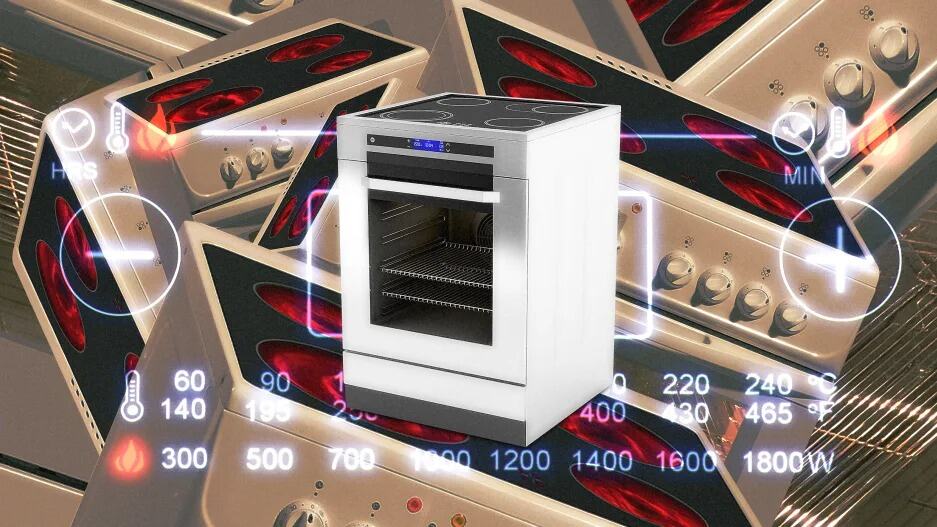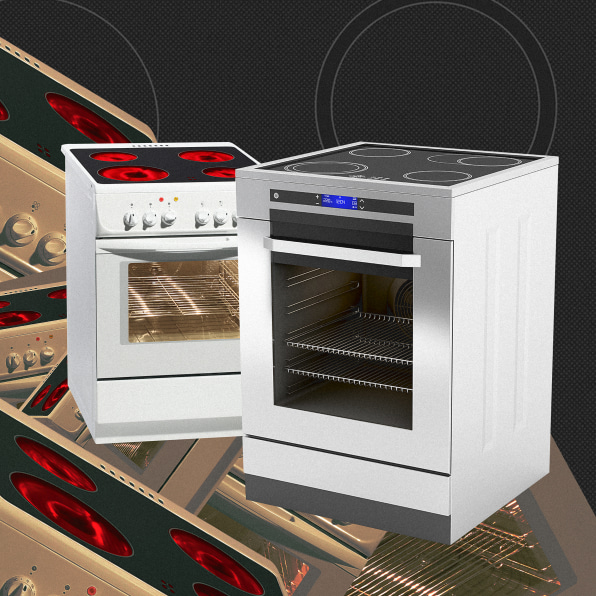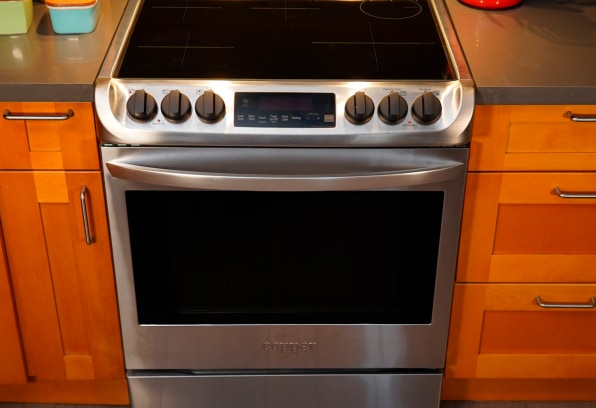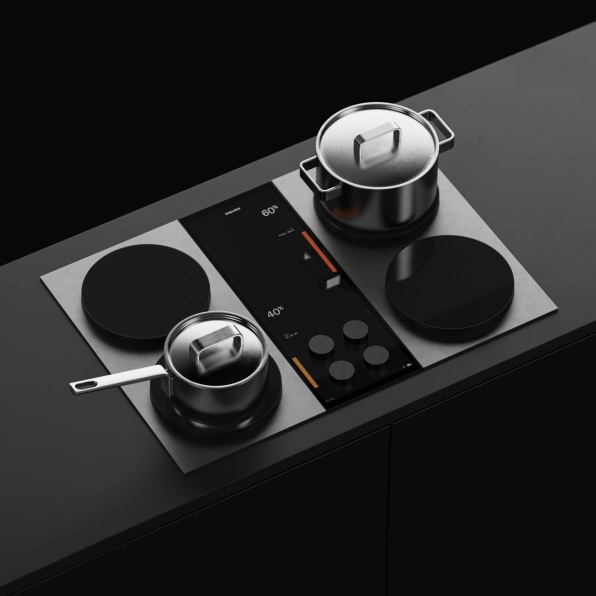- | 7:00 am
Should you replace your gas stove with an induction cooktop? Here’s what you need to know
Induction stoves are far better than traditional electric ranges—and can even outperform gas.

When chef Christopher Galarza took a job in a kitchen that didn’t have gas stoves—at a new Pennsylvania campus for Chatham University designed with sustainability in mind—he was skeptical about the idea of cooking with electricity. But after he tried using induction stoves, he was a convert. “It was one of those moments like, ‘Wait, why haven’t we done this before?’” he says.
Induction stoves have received renewed attention because of the negative climate and health impacts of gas—including a recent study that compared the indoor pollution from gas stoves to secondhand smoke. But there’s also a case to be made that induction simply works better.
When Galarza made the switch, he noted that the stoves heated up pans much faster, so it was possible to cook nearly twice as much food in an hour. Induction also responded more precisely to any adjustment. “Once you cook on induction, you realize that fire’s not very efficient,” he says. “There’s no precision at all.” The kitchen was more comfortable since it wasn’t as hot, and the stoves were easier to clean.
Other chefs have similar stories. After Alison Roman found out she couldn’t easily install a gas stove at home, she became an evangelist for induction. When chef Justin Lee opened the Manhattan restaurant Fat Choy in 2020, it was going to take so long to get gas connected that he ended up choosing induction instead.
“It’s so fast,” Lee says. “It’s super powerful. . . . It’s also easy to use, once you learn it. It’s easy to scrub and clean it, and it’s not nearly as disgusting as a gas range.”
Gas stoves have a long-standing reputation as being the best option for cooking, though that’s at least in part because the gas industry has pushed the idea for decades, from 1930s ads touting “nature’s perfect fuel” to more recent campaigns that paid Instagram influencers to gush about cooking on gas stoves. Then there’s the fact that traditional electric stoves often don’t work well. But induction works differently. If you’re considering making the switch, here’s a quick guide to the technology.

TRADITIONAL ELECTRIC STOVES VS. INDUCTION
If you’ve tried an electric stove in the past, it was probably a traditional electric resistance stove, with coil burners inside that heat the cooktop. “It takes a long time to heat up, and then stays hot for a long time,” says Sam Calisch, head of special projects at the nonprofit Rewiring America, and one of the founders of the induction startup Channing Copper. “This is the stove that I grew up with. You could burn yourself later even if it didn’t look like it was hot. And it was an unresponsive cooking experience.”
Induction stoves also run on electricity but use a magnetic field to transfer electricity directly to a pan, not the surface of the stove. (This means that the cookware you use also has to be magnetic, so you’ll need to use stainless steel or cast iron, or pots and pans made from a combination of metals, rather than aluminum or copper.)
“As soon as you turn it on, it’s going to channel all that energy directly into the cookware and into your food,” Calisch says. It gets hot much more quickly than gas. Water can boil in less than two minutes. If you turn down the heat, there’s an immediate response. When you take the pan off the stove, the surface will be cool, making it easier to clean up spills.

While you won’t have the visual feedback of looking at a gas flame, once you learn the best settings for your food, induction is easy to use. Some induction stoves list temperatures, so you can adjust the pan to 200 degrees Fahrenheit, for example. “It’s easier to replicate a recipe instead of being like, ‘turn it to medium-high,’” Lee says, noting that it doesn’t matter if there aren’t flames to watch. “Any good cook is looking at the action in the pan when you’re adjusting the flame.”
All induction stoves aren’t created equal, and the cheapest models may not perform as well. For example, some low-end models cycle on and off when they’re operating at low temperatures. But arguably a midrange model like the Frigidaire Gallery, priced at $1,200—one that Calisch recommends—can outperform gas. Higher-end models can perform even better, and some have bonus features like knobs rather than touch buttons to adjust heat.

HOW THE INFLATION REDUCTION ACT CAN SAVE YOU MONEY
The Biden administration isn’t coming for your gas appliances. But the government is offering incentives to help people buy new induction and electric stoves through the Inflation Reduction Act, as part of a bigger plan to help the U.S. cut emissions. The money, which states will begin distributing later this year, includes rebates of up to $840. A calculator from Rewiring America can help you figure out how much you could save on stoves along with other climate tech for your home, from solar panels to electric cars.
HOW INSTALLATION WORKS
Someone upgrading a regular electric stove to induction may be able to just plug in their new stove. But if you have a gas hookup now, you may need an electrician to install new wiring. In an older house, that also might mean installing a new breaker box that can handle more power. Because there’s a shortage of electricians now, and the job is relatively small, it may be hard to find someone willing to do it, or they may charge a steep fee. The good news: The Inflation Reduction Act incentives can help cover the cost of new wiring. And some new stoves coming out soon will use batteries, making rewiring unnecessary.

THE NEXT GENERATION OF INDUCTION
Induction stoves with lithium-ion batteries also make it possible to boil water even faster. Impulse, one startup working on a new model, says that it can boil water in 40 seconds, 10 times faster than a high-end gas stove. If the stove is connected to high-voltage wiring, the battery can also store power when the grid has extra renewable energy (in some areas, this can save on electric bills). Batteries also make it possible to use the stove if there’s a power outage.
THE BIGGER CASE FOR MAKING THE SWITCH
Gas stoves emit dangerous indoor air pollution, including carbon monoxide, formaldehyde, nitrogen dioxide, and particulate matter, which can increase the risk of asthma and heart disease. One recent study suggested that nearly 13% of childhood asthma is attributable to gas stove use, perhaps a comparable risk to living with a smoker.
A simulation at the Lawrence Berkeley National Laboratory found that an hour of cooking with gas can add up to 3,000 parts per billion of carbon monoxide emitted into the air, more than 100 times the recommended limit from the World Health Organization. Exhaust hoods can help, though surveys show that home cooks often don’t use them.
Gas stoves are also responsible for climate pollution—both because natural gas production is a major emitter of methane, a potent greenhouse gas, and because of leaks that happen in homes. One recent Stanford study found that methane leaks from gas stoves (even when they’re off) can emit the equivalent climate pollution of half a million cars.






































